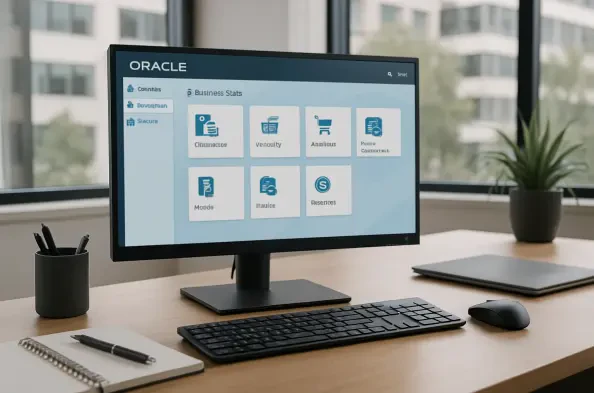Imagine a scenario where a cornerstone of global business operations, relied upon by countless organizations for managing critical functions, becomes a prime target for cybercriminals, exposing significant vulnerabilities. This is the reality faced by users of Oracle E-Business Suite, an enterprise software suite integral to financials, supply chain, and human resources management. A recent high-profile hacking campaign has exposed weaknesses in this system, leading to extortion demands in the millions. This review delves into the technology’s strengths, the critical security flaws uncovered, and the broader implications for enterprise software in an era of escalating cyber threats.
Technology Overview and Context
Oracle E-Business Suite stands as a comprehensive solution for businesses seeking integrated applications to streamline operations across various domains. Designed to support complex organizational needs, it offers modules for enterprise resource planning, customer relationship management, and more, catering to industries ranging from manufacturing to finance. Its widespread adoption underscores its reliability, yet it also paints a target on its back for malicious actors looking to exploit any weaknesses in such a high-value system.
The recent cybersecurity incident has brought this software into sharp focus, revealing how even robust platforms can fall prey to determined attackers. Hackers have capitalized on known vulnerabilities, sending shockwaves through the user base with demands for ransom payments. This situation highlights a pressing challenge in the tech landscape: balancing functionality with airtight security in enterprise solutions.
Detailed Analysis of Features and Performance
Core Strengths of the Suite
At its core, Oracle E-Business Suite excels in providing a unified platform that integrates disparate business processes into a single, cohesive system. This integration allows for real-time data access and decision-making, a critical advantage for large enterprises managing global operations. Features like customizable workflows and scalability make it adaptable to diverse business needs, ensuring it remains a preferred choice for many corporations.
Beyond functionality, the software’s robust reporting tools enable detailed analytics, helping organizations optimize performance and forecast trends. Its ability to handle massive transaction volumes without significant lag further cements its reputation as a reliable backbone for enterprise operations. However, these strengths are now overshadowed by security concerns that threaten to undermine user confidence.
Security Flaws and Exploited Vulnerabilities
The hacking campaign targeting this platform has laid bare critical security shortcomings, particularly the exploitation of previously identified vulnerabilities. Oracle has issued urgent advisories, urging customers to update their systems to patch these gaps. The persistence of outdated software among users, often due to resource constraints or complex deployment environments, has provided an easy entry point for cybercriminals.
Reports indicate that the attackers, likely tied to the ransomware group Cl0p, have leveraged these flaws to launch a high-volume extortion campaign. The ease with which known issues were exploited raises questions about the timeliness of patch deployment and the adequacy of security protocols embedded within the suite. This incident serves as a stark reminder that even well-established software can harbor risks if not diligently maintained.
Scale of Impact and Extortion Tactics
The financial stakes of this breach are staggering, with extortion demands ranging from millions to as high as $50 million in some cases, according to industry research. Such figures reflect not only the hackers’ audacity but also the potential disruption to targeted businesses, which face operational downtime and reputational harm alongside monetary losses. The sheer scale of these demands underscores the high value placed on the data and systems managed by this software.
Moreover, the involvement of Cl0p, a group known for its ransomware-as-a-service model, amplifies the threat. By leasing malicious tools to other cybercriminals, this Russia-linked entity ensures a broad and persistent attack surface. Their evasive tactics and adaptable methods, as noted by cybersecurity experts, complicate efforts to predict and counter future incursions, leaving businesses in a reactive posture.
Challenges in Mitigating Threats
Addressing the fallout from this incident poses significant hurdles for both Oracle and its clientele. Ensuring that all systems are updated to eliminate known vulnerabilities is a daunting task, especially for organizations with sprawling, legacy infrastructures. The lack of transparency regarding the exact number of affected users further muddies the waters, making it difficult to gauge the full scope of the breach.
Additionally, the evolving nature of cybercriminal strategies presents an ongoing challenge. Groups like Cl0p continuously refine their approaches, staying ahead of traditional defense mechanisms. Collaborative efforts between tech giants and security firms are underway to enhance threat detection and response, but the complexity of these attacks often outpaces the speed of solutions.
The broader cybersecurity landscape also struggles with systemic issues, such as insufficient resources for smaller enterprises to maintain robust defenses. This disparity means that while larger corporations may weather such storms, smaller users of the suite remain disproportionately vulnerable. Bridging this gap requires not just technological fixes but also policy and educational initiatives to bolster overall resilience.
Verdict and Future Considerations
Reflecting on the cybersecurity incident that shook Oracle E-Business Suite users, it becomes evident that even stalwart enterprise solutions are not immune to sophisticated attacks. The exploitation of known vulnerabilities and the audacious extortion demands have highlighted critical gaps in security preparedness. The involvement of adept ransomware groups like Cl0p has further complicated the landscape, exposing the persistent cat-and-mouse game between defenders and attackers.
Moving forward, actionable steps emerge as vital for safeguarding this technology. Organizations need to prioritize timely software updates and invest in comprehensive security training to mitigate risks. Oracle, alongside industry partners, must accelerate the development of advanced threat detection tools and foster greater transparency about breaches to aid collective defense efforts.
Looking ahead, a renewed focus on building trust in enterprise software through enhanced security standards is imperative. Collaborative frameworks between tech providers and cybersecurity experts could drive innovations in automated patching and real-time monitoring over the next few years, starting from 2025. Ultimately, this incident serves as a catalyst for reevaluating how critical business systems are protected, urging a proactive stance against the ever-looming specter of cyber threats.






